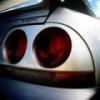do s13 sr20 turbos fit a gtr
Announcements
-
Similar Content
-
Latest Posts
-
This is where I share pain with you, @Duncan. The move to change so many cooling system pieces to plastic is a killer! Plastic end tanks and a few plastic hose flanges on my car's fail after so little time. Curious about the need for a bigger rad, is that just for long sessions in the summer or because the car generally needs more cooling?
-
So, that is it! It is a pretty expensive process with the ATF costing 50-100 per 5 litres, and a mechanic will probably charge plenty because they don't want to do it. Still, considering how dirty my fluid was at 120,000klm I think it would be worth doing more like every 80,000 to keep the trans happy, they are very expensive to replace. The job is not that hard if you have the specialist tools so you can save a bit of money and do it yourself!
-
OK, onto filling. So I don't really have any pics, but will describe the process as best I can. The USDM workshop manual also covers it from TM-285 onwards. First, make sure the drain plug (17mm) is snug. Not too tight yet because it is coming off again. Note it does have a copper washer that you could replace or anneal (heat up with a blow torch) to seal nicely. Remove the fill plug, which has an inhex (I think it was 6mm but didn't check). Then, screw in the fill fitting, making sure it has a suitable o-ring (mine came without but I think it is meant to be supplied). It is important that you only screw it in hand tight. I didn't get a good pic of it, but the fill plug leads to a tube about 70mm long inside the transmission. This sets the factory level for fluid in the trans (above the join line for the pan!) and will take about 3l to fill. You then need to connect your fluid pump to the fitting via a hose, and pump in whatever amount of fluid you removed (maybe 3 litres, in my case 7 litres). If you put in more than 3l, it will spill out when you remove the fitting, so do quickly and with a drain pan underneath. Once you have pumped in the required amount of clean ATF, you start the engine and run it for 3 minutes to let the fluid circulate. Don't run it longer and if possible check the fluid temp is under 40oC (Ecutek shows Auto Trans Fluid temp now, or you could use an infrared temp gun on the bottom of the pan). The manual stresses the bit about fluid temperature because it expands when hot an might result in an underfil. So from here, the factory manual says to do the "spill and fill" again, and I did. That is, put an oil pan under the drain plug and undo it with a 17mm spanner, then watch your expensive fluid fall back out again, you should get about 3 litres. Then, put the drain plug back in, pump 3 litres back in through the fill plug with the fitting and pump, disconnect the fill fitting and replace the fill plug, start the car and run for another 3 minutes (making sure the temp is still under 40oC). The manual then asks for a 3rd "spill and fill" just like above. I also did that and so had put 13l in by now. This time they want you to keep the engine running and run the transmission through R and D (I hope the wheels are still off the ground!) for a while, and allow the trans temp to get to 40oC, then engine off. Finally, back under the car and undo the fill plug to let the overfill drain out; it will stop running when fluid is at the top of the levelling tube. According to the factory, that is job done! Post that, I reconnected the fill fitting and pumped in an extra 0.5l. AMS says 1.5l overfill is safe, but I started with less to see how it goes, I will add another 1.0 litres later if I'm still not happy with the hot shifts.
-
OK, so regardless of whether you did Step 1 - Spill Step 2 - Trans pan removal Step 3 - TCM removal we are on to the clean and refill. First, have a good look at the oil pan. While you might see dirty oil and some carbony build up (I did), what you don't want to see is any metal particles on the magnets, or sparkles in the oil (thankfully not). Give it all a good clean, particularly the magnets, and put the new gasket on if you have one (or, just cross your fingers) Replacement of the Valve body (if you removed it) is the "reverse of assembly". Thread the electrical socket back up through the trans case, hold the valve body up and put in the bolts you removed, with the correct lengths in the correct locations Torque for the bolts in 8Nm only so I hope you have that torque wrench handy (it feels really loose). Plug the output speed sensor back in and clip the wiring into the 2 clips, replace the spring clip on the TCM socket and plug it back into the car loom. For the pan, the workshop manual states the following order: Again, the torque is 8Nm only.
-
One other thing to mention from my car before we reassemble and refill. Per that earlier diagram, There should be 2x B length (40mm) and 6x C length (54mm). So I had incorrectly removed one extra bolt, which I assume was 40mm, but even so I have 4x B and 5x C. Either, the factory made an assembly error (very unlikely), or someone had been in there before me. I vote for the latter because the TCM part number doesn't match my build date, I suspect the TCM was changed under warranty. This indeed led to much unbolting, rebolting, checking, measuring and swearing under the car.... In the end I left out 1x B bolt and put in a 54mm M6 bolt I already had to make sure it was all correct
-





Recommended Posts
Create an account or sign in to comment
You need to be a member in order to leave a comment
Create an account
Sign up for a new account in our community. It's easy!
Register a new accountSign in
Already have an account? Sign in here.
Sign In Now